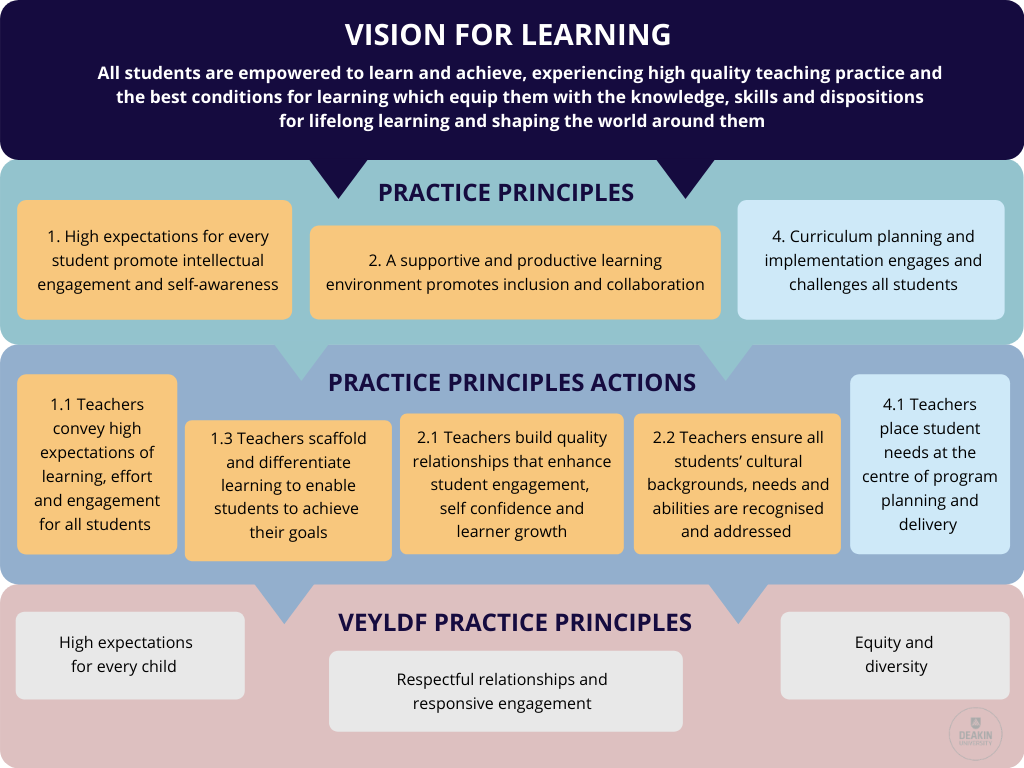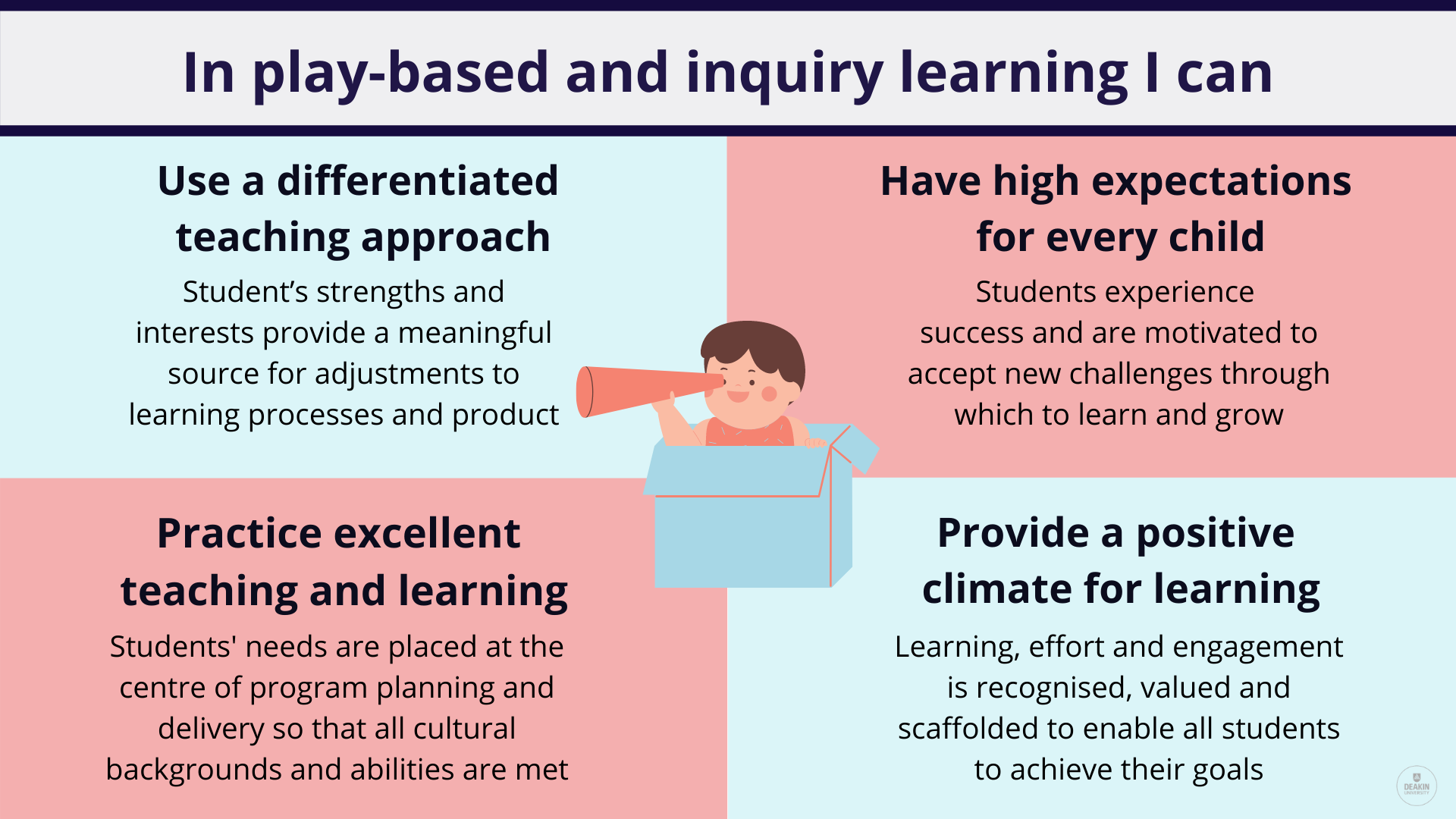How can I differentiate teaching in play-based and inquiry learning?
Play-based and inquiry learning allows teachers to differentiate and respond to the diverse backgrounds and personal strengths, needs, interests and capacities of their students. In this way, play-based and inquiry learning explicitly supports Strategy 10  Differentiated Teaching of the High Impact Teaching Strategies (HITS).
Differentiated Teaching of the High Impact Teaching Strategies (HITS).
Play-based and inquiry learning provides opportunities for differentiated teaching where students are supported to engage their curiosity and work at a variety of levels, in their own different ways, from a strengths-based perspective.
Differentiated teaching and learning recap
Professor Lorraine Graham's discusses differentiated teaching and learning which is an essential
resource within HITS Strategy 10.
Play-based and inquiry learning is differentiated learning
In a play-based and inquiry approach, learning experiences are adjusted to suit both the process students use to learn, and the product that is expected from them. Learning experiences are tailored and responsive to what is documented, assessed and known about the individual student.
Play-based inquiry and learning differentiates the process and product of learning because students choose how they work on a specific concept by selecting experiences available to them in the classroom or outdoor environment This makes it possible to work at their own levels of proficiency. The guidance and feedback given to the children during their play-based and inquiry learning experiences helps to extend their learning.
Teacher's role
The learning process might be adjusted by changing the type of intervention or role that you, as a teacher, have in the student's play and inquiry experience.
For example, for a child who is excelling you may promote more complex methods of inquiry to extend their learning in play and provide more opportunities for collaborative learning with peers.
Other students may require you to provide them with more explicit instruction, modelling and questioning to guide their learning in play.
In any play-based and inquiry learning experience, each student's strengths and interests will provide opportunities for meaningful adjustments to the learning process and product. We will explore the teacher's role in play-based and inquiry learning in more detail in Module 2.
Framing differentiated play-based inquiry learning within your context
Explore the key resources below that show the connection between Victoria's vision for learning, the Practice Principles for Excellence for Teaching and Learning, and the VEYLDF Practice Principles.
Vision for Learning infographic

Downloadable version of Vision for Learning infographic
Frameworks for teaching and learning
The idea that play-based and inquiry learning provides a form of differentiated teaching is supported by Victoria's vision for learning and practice principles.
The figures above and below this box explore and illustrate some key ways that play-based and inquiry learning supports your practice of excellence in teaching and learning, and the relationship that exists between principles and documents.
If you would like to explore any of these resources more closely, please click the following links:
Victoria's vision for learning
Practice principles for excellence in teaching and learning
VEYLDF Practice Principles
Practice Principles for differentiated play-based and inquiry learning infographic

Downloadable version of Practice Principles for differentiated play-based and inquiry learning infographic
Keep in mind
We will explore how a play-based and inquiry learning approach can
support the learning outcomes of diverse learners and develop inclusive
learning communities in schools and classrooms in Module 4.